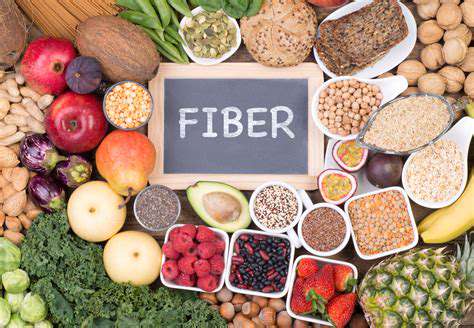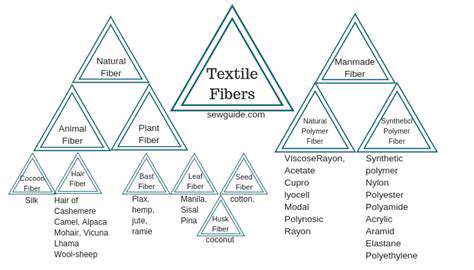Why is Fiber Crucial for Digestive Well-being?

Fiber's Role in Digestive Health
Dietary fiber, an indigestible component of plant-based foods, plays a vital role in maintaining a healthy digestive system. It's not absorbed by the body, but its presence is crucial for promoting regularity and preventing various digestive issues. Fiber acts like a brush, sweeping through the digestive tract and helping to remove waste products. This process helps prevent constipation and promotes the smooth movement of food through the intestines.
Different types of fiber exist, each with unique benefits. Soluble fiber, found in oats, beans, and fruits, dissolves in water to form a gel-like substance. This gel helps slow down digestion, which can help regulate blood sugar levels and lower cholesterol. Insoluble fiber, found in vegetables like broccoli and whole grains, adds bulk to the stool, promoting regularity and preventing constipation.
Benefits for Gut Microbiome
A healthy gut microbiome is essential for overall health, and fiber is a key player in its development and maintenance. Fiber serves as a prebiotic, feeding the beneficial bacteria in the gut and promoting their growth. These beneficial bacteria produce essential vitamins and short-chain fatty acids (SCFAs), which are important for maintaining gut health and overall well-being.
A balanced and diverse gut microbiome is associated with improved immune function, reduced inflammation, and a lower risk of certain diseases. By providing the necessary fuel for beneficial gut bacteria, fiber contributes to a healthier gut environment.
Preventing Digestive Issues
Fiber is a powerful tool in the fight against various digestive problems. Constipation, a common complaint, can be significantly alleviated by increasing fiber intake. Fiber adds bulk to the stool, making it easier to pass and preventing straining during bowel movements. This can help reduce the risk of hemorrhoids and other related problems.
Maintaining regular bowel movements is essential for preventing digestive discomfort and promoting overall well-being. Fiber-rich foods can also help prevent diverticulitis, a condition where small pouches form in the digestive tract.
Fiber and Blood Sugar Control
For individuals with diabetes or those looking to manage their blood sugar levels, fiber plays a crucial role. Soluble fiber slows down the absorption of sugar into the bloodstream, preventing sharp spikes in blood glucose levels after meals. This helps maintain stable blood sugar levels, preventing fluctuations and improving overall metabolic health.
By slowing down digestion, fiber allows for a more gradual release of glucose, promoting better blood sugar control and reducing the risk of complications associated with elevated blood sugar levels.
Fiber and Weight Management
Fiber's role in weight management is often overlooked, yet it's a key component of a healthy diet. Fiber-rich foods tend to be more filling and satisfying, leading to reduced overall calorie intake. This effect, combined with the promotion of satiety, contributes to weight management and weight loss efforts.
The feeling of fullness after consuming fiber-rich foods helps to curb cravings and prevent overeating. This can be especially beneficial for those trying to maintain a healthy weight or lose excess pounds. In addition, fiber promotes a healthy metabolism, further contributing to overall well-being.
Understanding the Different Types of Fiber

Understanding the Essence of Type Classification
Classifying types is a fundamental aspect of understanding their characteristics and applications. This process involves examining various factors, including construction materials, functionality, and intended use. Proper classification allows for efficient organization and comparison, enabling informed decisions about the selection and use of different types.
Different types often possess unique strengths and weaknesses, influencing their suitability for specific tasks. Recognizing these nuances is crucial for achieving optimal results and avoiding potential pitfalls.
Material Composition and its Impact
The materials used in constructing a type significantly influence its overall performance and durability. Different materials have varying resistance to wear and tear, chemical exposure, and environmental conditions. Understanding these differences is critical for selecting the most appropriate type for specific applications.
Functional Attributes and Design Considerations
Functional attributes are key characteristics of types, directly impacting their utility. Consideration of these attributes during design ensures that the type effectively fulfills its intended purpose. Careful consideration of these attributes is vital for achieving optimal performance.
Factors like size, shape, and operating mechanisms all contribute to the overall functionality of a type. Analyzing these factors allows for a comprehensive understanding of its capabilities.
Performance Metrics and Evaluation Criteria
Performance metrics provide quantifiable measures of a type's effectiveness. These metrics, like speed, efficiency, and durability, help assess the quality and suitability of different types for various applications. Evaluating different types based on these metrics allows for informed comparisons.
Comprehensive evaluation considers both qualitative and quantitative factors, providing a more holistic understanding of the type's performance capabilities.
Comparative Analysis and Selection Strategies
Comparing different types side-by-side highlights key distinctions and allows for informed selection decisions. This process often involves considering factors such as cost, availability, and maintenance requirements. Careful comparison of different types is crucial for selecting the most advantageous option.
Application Specificity and Type Adaptation
The specific application dictates the necessary attributes of a type. Understanding the unique demands of a given application is essential for selecting the most suitable type. Adapting types to specific applications requires careful consideration of the unique requirements.
Modifications and customizations are often necessary to ensure optimal performance and meet the specific needs of the application. This process involves evaluating the existing type and making appropriate adjustments for enhanced functionality within the specific application.
